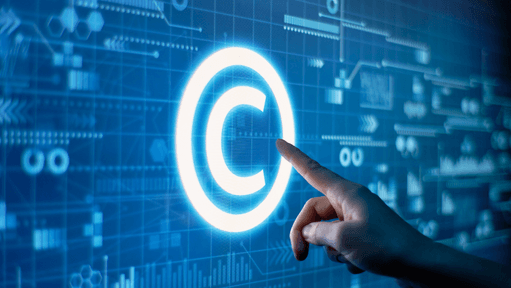
Navigating the Intersection of AI and Intellectual Property: Challenges and Solutions
As AI Technology Advances, Existing IP Laws Face Significant Reforms to Protect Creators and Innovators
The rapid growth of Artificial Intelligence (AI) has significantly impacted industries worldwide, leading to unprecedented innovations and applications. However, this transformation also raises crucial questions about the protection of intellectual property (IP). As AI becomes more sophisticated and integrated into creative and business processes, existing IP laws face challenges in safeguarding the rights of creators, inventors, and owners of intangible assets.
1. AI and Intellectual Property: A Complex Relationship
AI-driven technologies, especially those utilizing machine learning (ML) and deep learning, have the ability to create content autonomously, such as music, literature, art, and even patented inventions. Traditionally, IP laws were designed to protect the rights of human creators and innovators, but AI’s ability to generate creative outputs independently introduces new complexities.
For example, the question of authorship arises: should AI systems, or their developers, be granted IP rights over creations produced by AI? Many jurisdictions, including the US and EU, still recognize human authorship as a fundamental prerequisite for IP protection, making it difficult to grant rights for AI-generated content.
2. Copyright Law and AI-Generated Content
One of the most pressing concerns is in the realm of copyright. Copyright law traditionally protects original works created by human intellect. With AI systems now capable of generating high-quality content, such as art and music, the challenge is determining who owns the rights to these works. Many argue that if AI merely assists a human in creating content, the human should be the rights holder. However, in instances where AI operates independently, a gap in the law emerges.
Solution Pathways: Some legal frameworks propose that AI-generated works should fall into the public domain unless a specific arrangement is made between the AI developer and the user. Others suggest a new form of IP protection tailored to AI-generated content, although this approach requires significant legal reforms.
3. Patents and AI-Driven Innovations
AI’s ability to autonomously invent new products or processes presents a unique challenge in patent law. Traditionally, patents are awarded to human inventors for novel, non-obvious inventions. However, with AI systems capable of discovering new drug formulations, software algorithms, and technological processes, patent offices worldwide are grappling with how to accommodate AI innovations.
The DABUS case, which involved an AI system inventing a food container and a light-emitting device, prompted international debate when patent applications were filed in its name. While South Africa became the first country to grant a patent to an AI-generated invention, other jurisdictions, such as the US, UK, and EU, have rejected such claims, reaffirming that inventorship remains a human-centric concept.
4. Data Ownership and Trade Secrets
AI systems heavily rely on vast datasets to train algorithms and make predictions. The ownership of these datasets raises further IP concerns. Companies that compile large, proprietary datasets often protect them through trade secret laws. However, as AI-driven tools increasingly rely on publicly available data to train their models, disputes over data ownership and usage rights are emerging.
AI’s ability to infer or deduce sensitive information from public data sources further complicates matters, as it risks breaching trade secrets, even if the data used is not directly protected. Protecting proprietary data, algorithms, and processes in an AI-driven world requires revisiting both trade secret and data privacy laws.
5. Challenges of Enforcement and Licensing in AI
Enforcing IP rights in the context of AI is another major challenge. As AI-generated content proliferates, tracking and monitoring unauthorized use of copyrighted material becomes increasingly difficult. The issue is further compounded by the cross-border nature of AI technologies, which often involve multiple jurisdictions with varying IP laws.
Licensing agreements for AI-created content also need revision. For instance, platforms like "Created by Humans" aim to provide a controlled environment where creators can license their work to AI developers, ensuring authors and rights holders maintain control over how their creations are used in AI systems.
6. Reforming IP Laws: The Path Forward
As AI continues to evolve, it is clear that IP laws must adapt to address the new challenges posed by these technologies. Some key areas for reform include:
- Clarifying Authorship: Defining clear rules on the authorship and ownership of AI-generated content is crucial. Legislators should consider new legal categories that address the unique contributions of AI while protecting human creators.
- Updating Patent Laws: Patent systems worldwide may need to evolve to account for AI’s role in the inventive process. This could include recognizing AI as co-inventors or implementing AI-specific patent categories.
- Data Protection Frameworks: Stronger frameworks for data protection and ownership, particularly in relation to the datasets used to train AI, are essential for safeguarding trade secrets and proprietary information.
- Licensing Structures: Introducing standardized licensing models for AI-generated content will help creators maintain control over their works, ensuring fair compensation and proper usage by AI developers.
Conclusion
The intersection of AI and intellectual property law presents both challenges and opportunities. While AI has the potential to drive innovation and creativity to new heights, it is essential to ensure that IP laws evolve to protect the rights of human creators and developers. Governments, industry stakeholders, and legal professionals must collaborate to build frameworks that balance innovation with protection, ensuring that IP rights remain relevant in the age of AI.
For any enquiries or information, contact ask@tlr.ae or call us on +971 52 644 3004. Follow The Law Reporters on WhatsApp Channels